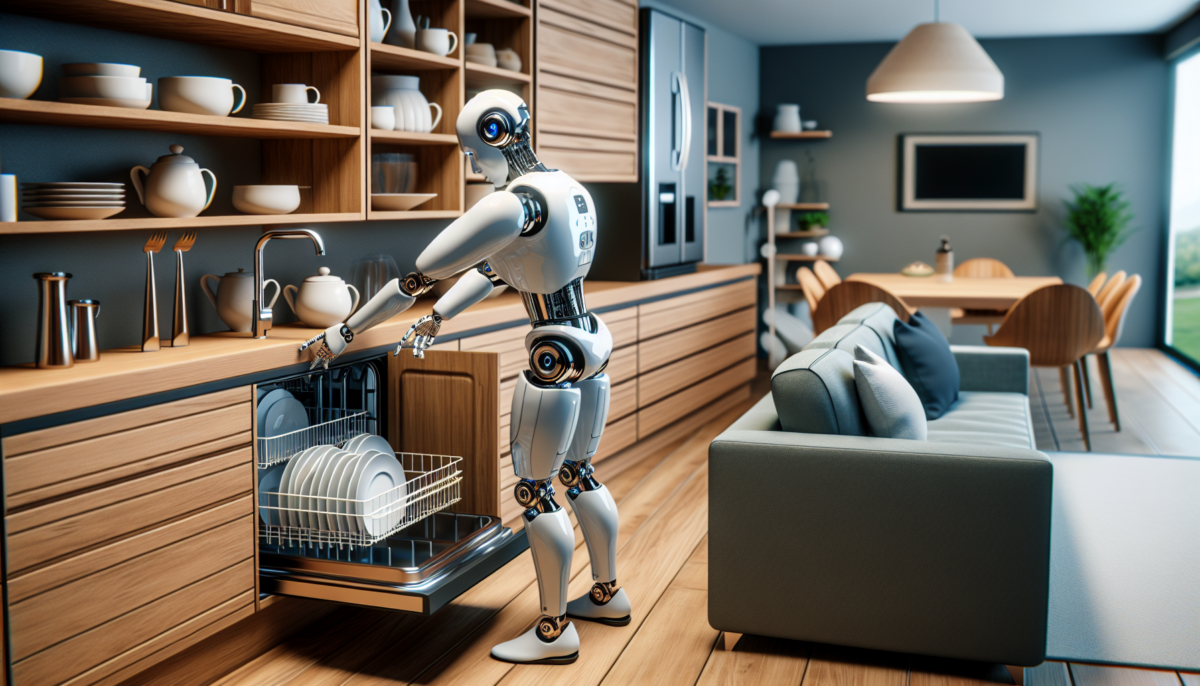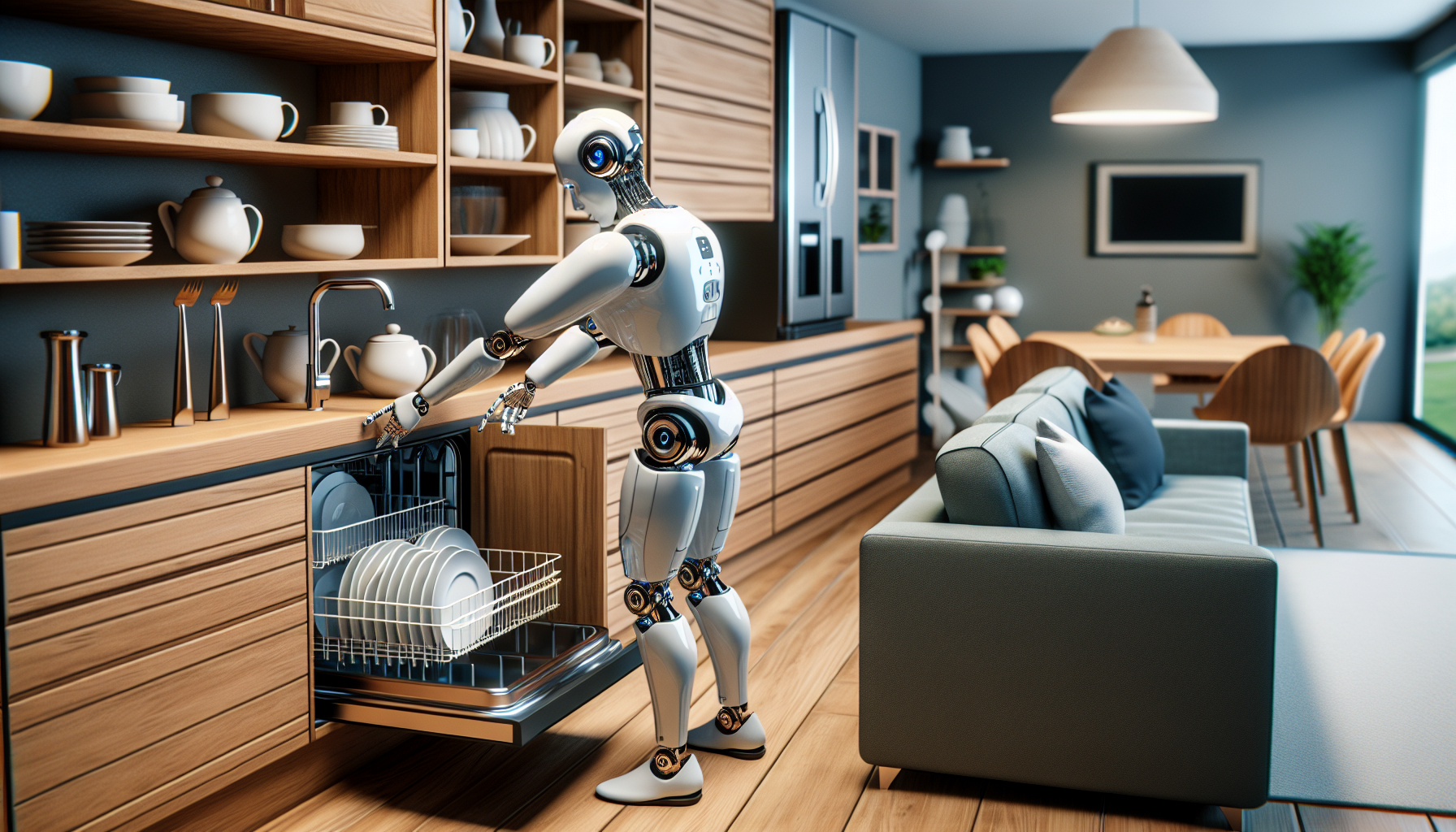1X’s Humanoid Robot Spotted Organizing: From Emptying the Dishwasher to Fluffing the Couch Cushions
We independently review everything we recommend. When you buy through our links, we may earn a commission which is paid directly to our Australia-based writers, editors, and support staff. Thank you for your support!

Quick Overview: Highlights from NEO’s Latest Humanoid Update
- 1X Technologies is focusing on humanoid robots for residential purposes rather than industrial ones.
- Their newest humanoid, NEO, carries out tasks like gathering leaves, loading dishwashers, and organizing cushions—entirely on its own.
- The tasks showcased illustrate NEO’s sophisticated object handling, spatial awareness, and overall intelligence.
- NEO undergoes training via data-centric techniques, allowing it to function in unpredictable settings such as homes.
- 1X posits that achieving home-based autonomy presents greater challenges and rewards than factory duties.
- The creation of NEO indicates a transition towards general-purpose robotics suited for everyday living spaces.
NEO the Humanoid Robot: A Preview of Home Automation’s Future

1X’s Goal: Humanoids Designed for Home Life
While a multitude of robotics firms are concentrating on factories and warehouses with their humanoid designs, 1X Technologies is embarking on a daring shift towards domestic environments. Their flagship humanoid, NEO, is crafted to address the disorganized and ever-changing atmosphere of the home. From gathering leaves in the yard to arranging dishes in the dishwasher, NEO is being engineered as a versatile housekeeper with a singular goal: to ease everyday living.
Autonomous Action: Gathering Leaves
In a recent showcase from the company’s AI VP, NEO demonstrated the ability to collect leaves and deposit them into a bag—an ordinary chore in households with trees. Unlike prior robotic showcases that depended on remote controls, NEO executed the task fully autonomously. This achievement required the robot to visually identify leaves, strategize its arm movements, and manage its carrying capacity.
Although the robot hasn’t yet demonstrated the complete task—like disposing of the leaves in a bin—it marks a significant progress point. The objective is evident: teach robots to navigate complex sequences of actions in unpredictable real-life scenarios.
Conquering the Dishwasher: A Delicate Coordination Task
Another video captured NEO addressing a frequently dreaded household chore—loading the dishwasher. This task is considerably more intricate than it appears. Each item varies in dimensions, shape, and texture. NEO adeptly retrieved a cup from the sink, transferred it between hands for optimal positioning, and placed it accurately into the dishwasher compartment.
While the demonstration was simplified (the dishwasher door was already open, for instance), it showcases essential robotic skills: object recognition, hand-eye coordination, and spatial reasoning. For widespread implementation, NEO will need to adapt to various dishwasher designs, necessitating pre-programming or in-situ learning.
Couch Ready: Cushion Placement Shows Balance and Understanding
In another segment, NEO was seen walking to a couch and correctly positioning a cushion. This task, though it may seem straightforward, highlights the robot’s capability to comprehend object context, maintain stability, and execute fine motor movements. Placing a cushion without tumbling over or misaligning it requires precise coordination of arms, spine, and lower body actions.
This type of task also presents the complication of moving obstacles—children, pets, or shifting furniture. NEO’s ability to adjust in such situations will be crucial for its long-term applicability in household settings.
Why the Home Represents the “Ultimate Challenge” for Robotics
According to 1X’s AI VP, homes serve as the ultimate testing ground for robotic autonomy. Unlike factories or warehouses, each home possesses its own uniqueness. The array of environments and tasks—unscrewing detergent lids, folding laundry, navigating toys—requires robots to cultivate general intelligence over narrowly focused models.
Instead of tackling one task at a time, 1X is training NEO using a comprehensive data-first approach. This mirrors how AI systems like ChatGPT were built: with extensive datasets spanning various domains to develop generalists. Conversely, most robotic companies rely on a limited, task-specific methodology that scales slowly and lacks adaptability.
From Consumer to Enterprise: An AI Strategy from the Ground Up
The company believes that this consumer-first strategy mirrors the successful trajectory seen in other AI fields. For instance, Tesla’s Autopilot was honed using data from consumer vehicles, outperforming attempts to create autonomous trucking systems in controlled settings. Similarly, 1X believes that deploying humanoids in homes first will provide the rich, diverse data required to ultimately evolve into commercial and industrial applications.
Conclusion
1X Technologies’ humanoid robot NEO is stretching the limits of what autonomous robots can achieve in daily settings. From leaf collection to dishwashing and cushion arranging, NEO showcases impressive functionalities that are still evolving but hold potential for practical uses. By targeting the unstructured home environment, 1X aims to address one of the most challenging issues in contemporary robotics. Their long-term ambition is evident: to develop data-rich, versatile robots capable of adapting to any task in any context.
Q: How is NEO different from other humanoid robots in development?
A:
NEO is specifically designed for home environments, unlike many other robots that focus on industrial or factory settings. It functions autonomously and is trained to perform a broad spectrum of general tasks rather than being programmed for just a few specific roles.
Q: Is NEO available for purchase or use in homes yet?
A:
Currently, NEO remains in the development and demonstration phase. There has been no official announcement from 1X Technologies regarding when the robot will be available for commercial use in homes.
Q: What makes home environments so challenging for robots?
A:
Homes, unlike factories, are unpredictable and differ significantly from one to another. Tasks can be erratic, and the environments are subject to dynamic changes due to pets, children, and differing furniture layouts. This makes it difficult for robots to depend on fixed programming or narrow AI approaches.
Q: How does NEO learn to perform tasks?
A:
NEO learns using data-oriented methods. It utilizes neural networks and reinforcement learning to comprehend and execute full-body movements, allowing it to concurrently coordinate its arms, legs, and spine during tasks.
Q: Can NEO adjust to different household appliances and layouts?
A:
The existing demonstrations are relatively structured, but the ultimate aim is for NEO to either generalize across diverse environments or undergo a learning phase to acclimate to specific home configurations, such as unique dishwasher setups.
Q: What’s the advantage of introducing robots in homes before factories?
A:
1X contends that homes provide the varied data essential for training general-purpose AI, which is more sustainable over time. In contrast to structured factory tasks, home tasks help robots build flexibility and adaptability—skills that can subsequently be applied in other areas.
Q: Will robots like NEO eventually take the place of human cleaners?
A:
While they may significantly alleviate the load of repetitive chores, robots like NEO are designed to assist rather than substitute. Human supervision, especially for complex or sensitive tasks, will remain essential for the foreseeable future.
Q: Where can I find updates on NEO’s progress?
A:
Updates can be tracked via 1X Technologies’ official website and social media platforms. You can also stay informed through future coverage right here on TechBest at techbest.com.au.
